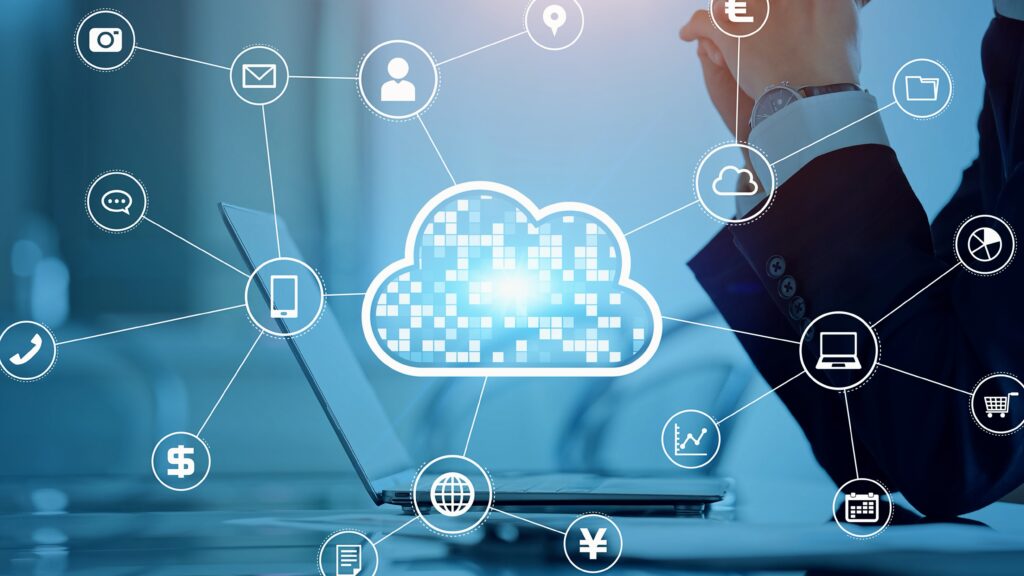Cloud ERP and Why?

In the 1990s, the phrase enterprise resource planning (ERP) was coined to refer to software that assists in managing and automating company’s business processes, from manufacturing and sales to financials. ERP systems were first deployed on-premises, that is, in the servers and data centers of the clients. This changed with the introduction of Modern ERP or Cloud ERP, revolutionizing how businesses approach resource planning.
Why ‘Good Enough’ No Longer Works in Modern Business?
Using outdated tools like whiteboards for planning, spreadsheets for inventory, or static KPIs for tracking performance methods may have worked before, but today’s business world demands more. Legacy ERP systems often weaken these challenges by restricting access to a few super users, leaving key stakeholders unable to fully utilize their capabilities. Additionally, data trapped in silos and reliant on manual, error-prone workflows delay critical decision-making and collaboration across business units. While these methods may seem “good enough,” the rapidly evolving business demands integrated enterprise-wide visibility and streamlined processes. Organizations must adopt systems that enable agility, foster collaboration, and empower data-driven decision-making to stay ahead in an increasingly competitive environment.
How Modern ERP is Bridging the Gap Between Data, Collaboration, and Agility!
Modern ERP systems are no longer optional—they are crucial for ensuring agility and responsiveness across an organization. Businesses using outdated ERP systems or disconnected data face inefficiencies, limited visibility, and slower decision-making. Success today requires easy access to data and seamless integration across all departments. This shift needs a commitment to data-driven operations and collaborative goals. While leadership plays a key role, involving employees at every level is equally important. By empowering teams to support these changes, businesses are adopting Modern ERP systems more smoothly, bringing people, processes, and data together to drive growth and innovation in competitive markets.
Modern ERP Demands an Organization-Wide Cultural Shift
The primary objective of a modern ERP system is to unify your workforce under shared goals. Achieving this requires a fundamental cultural transformation across the organization, fostering a data-driven mindset at every level. While leadership typically drives these changes, involving change agents from various levels of the company empower employees and give them a sense of ownership in the transformation journey.
How Does Cloud ERP Work?
Cloud ERP solutions use high-speed internet to give 24×7 access, with security and upgrades handled by the provider, lowering ownership costs as compared to older systems. Cloud ERPs are accessible via mobile or desktop and provide vast business applications, easy scalability, and safe access from anywhere, making them perfect for remote work in the post-COVID era.
It provides real-time access to important data like customer information, sales records, financial analytics, human resource tools, supply chain updates, and more. Additionally, tailored deployment patterns and industry-specific modules provide flexibility to satisfy a wide range of business objectives while delivering excellent customer experiences and commercial results.
Why Cloud ERP? Check Out the Below few Benefits!
If both cloud-based and on-premises ERP systems offer some or many similar capabilities, why choose the cloud?
Here’s why!
- Ease of Use
Your ERP system won’t deliver a good return on investment (ROI) if employees find it hard to use. Modern systems are easier to navigate, making it simpler for employees to access data and use it in their decision-making.
- Making Better Business Decisions
Modern ERP systems help businesses connect data across departments, providing a clear view of overall results and KPIs. This encourages a data-driven approach, helping teams align their goals with company objectives and see how their work impacts overall performance. ROI remains a primary goal for decision-makers, and new ERP systems enhance communication with executives via capabilities such as business analytics, scenario planning, and financial analysis. Understanding what drives current financial results and projecting future outcomes allows teams to make confident decisions and garner better management support for prudent resource investments.
- Real-time Insights
Modern ERP systems are designed to unlock Big Data, allowing you to access information hidden within massive and complicated datasets. While older ERP systems provide reporting tools, they lack the cloud’s integrated, real-time analytics, which are critical for better decision-making. The capacity to identify trends, predict changes, and automate procedures improves resource utilization and significantly improves customer service.
- Reduced Expenses
A subscription service eliminates the need to pay for hardware or ERP software up front. The provider handles upgrade and maintenance fees, which reduces ongoing IT and related labour costs. Cost reductions can be substantial, especially with a public cloud ERP solution.
- Simplified and Automated Business
With a contemporary cloud ERP, businesses can combine standalone historical programs, standardize and integrate all existing and future apps, and eliminate the need for disconnected systems. They can also simplify workflows, intelligently automate procedures, and create new efficiencies throughout the organization.
- Add-on Functionalities
Cloud ERP vendors provide functionality and application improvements to all firms who use their software via continuous upgrades, as well as many major releases per year. Because updates are given to everyone simultaneously, you never miss an opportunity while waiting for a vendor to update your custom ERP system. Furthermore, if clients identify comparable requirements, they can request changes from the ERP vendor.
- Security
With cloud ERP, full-time, experienced security specialists handle ERP security, data backups, and disaster recovery. Cloud vendors often provide the finest data protection, whereas security breaches in large and medium businesses are most common with on-premises systems. Because cloud ERP solutions are more comprehensive, integrated, and collaborative, they minimize integration vulnerabilities and mitigate the risks associated with a multi-vendor landscape.
- Fast Implementation
A cloud ERP system’s ramp-up time is substantially shorter than that of an on-premises implementation because your SaaS provider handles hardware, and software installs and provides dedicated data center maintenance staff. Cloud ERP corporate software, like consumer mobile apps, are easy to configure. The clear user interface makes learning to use the program quick and straightforward, speeding the work.
Wrapping up
The impact of ERP extends far and wide across operations.
For many organizations, the advantages of ERP systems run deep. For example, automating workflows fulfils top priorities beyond reducing manual work – such as increasing process accuracy and ensuring compliance. Data-rich, actionable insights from advanced analytics can detect inefficiencies and unearth opportunities to grow the business. And for supply chain teams, the cloud can help simplify multi-vendor networks to get a 360-degree view of their ability to keep up with demand profitably and sustainably.
Cloud ERP systems equip the entire organization—not just the finance team—with modern tools and technologies to drive growth, adapt quickly, and scale operations to meet the relentless pace of change. Partner with Invasystems to seamlessly transition your on-premise ERP system to a cloud-based solution and stay ahead in today’s dynamic business environment.



